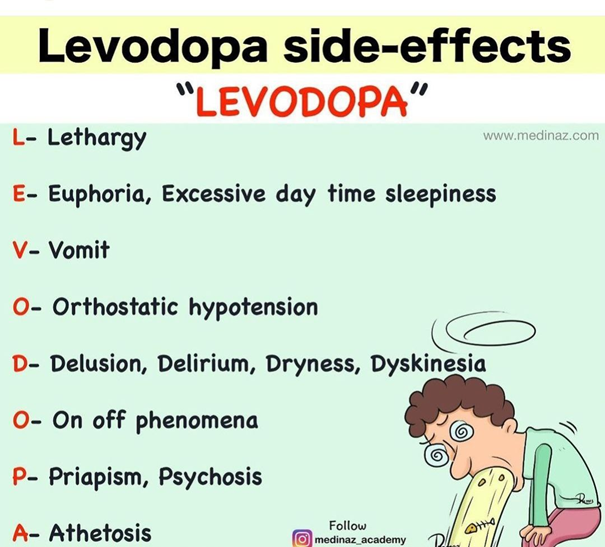Which condition would indicate to the nurse that the patient has a phenytoin (Dilantin) toxicity?
Nystagmus
Strabismus
Blurry vision
Amblyopia
The Correct Answer is A
A. Nystagmus:
Nystagmus is an involuntary, rhythmic movement of the eyes, which can be rapid and jerky. It is a common neurological manifestation of phenytoin toxicity. Patients experiencing phenytoin toxicity may exhibit horizontal or vertical nystagmus, which can be detected upon physical examination.
B. Strabismus:
Strabismus, also known as crossed eyes or squint, refers to a misalignment of the eyes. While strabismus can have various causes, it is not typically associated with phenytoin toxicity. Therefore, it is less likely to indicate phenytoin toxicity compared to nystagmus.
C. Blurry vision:
Blurry vision, or visual disturbances, can occur in patients experiencing phenytoin toxicity. However, it is a non-specific symptom and can be observed in various other conditions as well. Patients with phenytoin toxicity may experience blurry vision, double vision (diplopia), or other visual disturbances due to the effects of the medication on the central nervous system.
D. Amblyopia:
Amblyopia, also known as lazy eye, is a condition characterized by reduced vision in one or both eyes. It is typically associated with visual development during childhood and is not directly related to phenytoin toxicity. Therefore, it is less likely to indicate phenytoin toxicity compared to nystagmus or other neurological manifestations.
Nursing Test Bank
Naxlex Comprehensive Predictor Exams
Related Questions
Correct Answer is A
Explanation
A. "These drugs inhibit the action of acetylcholine":
This response is accurate. Anticholinergic medications work by blocking the action of acetylcholine, a neurotransmitter involved in various functions in the body, including muscle control. In Parkinson's disease, there is an imbalance between dopamine and acetylcholine, leading to motor symptoms such as tremors and rigidity. By inhibiting the action of acetylcholine, anticholinergic drugs help rebalance neurotransmitter activity and alleviate some of the motor symptoms associated with Parkinson's disease.
B. "These drugs help you urinate":
This statement is not directly related to the use of anticholinergic medications in Parkinson's disease. While some anticholinergic drugs can indeed relax the smooth muscle of the bladder and improve urinary symptoms, this is not the primary indication for their use in Parkinson's disease.
C. "These drugs will decrease your eye pressure":
While anticholinergic medications can be used to dilate the pupils and decrease intraocular pressure, this is not typically the reason for their use in Parkinson's disease. While some anticholinergic medications may have ocular effects, they are primarily used to address motor symptoms associated with Parkinson's disease.
D. "These drugs will assist in lowering your heart rate":
While some anticholinergic medications may have effects on heart rate by blocking parasympathetic nervous system activity, this is not the primary indication for their use in Parkinson's disease. The focus of anticholinergic therapy in Parkinson's disease is primarily on addressing motor symptoms rather than cardiovascular effects.
Correct Answer is A
Explanation
A. Orthostatic hypotension:
Orthostatic hypotension, a sudden drop in blood pressure when standing up, is a potential adverse effect of levodopa therapy. This can lead to dizziness and increase the risk of falls, thus supporting the nursing diagnosis Risk for Injury.
B. Nausea and vomiting:
Nausea and vomiting are common side effects of levodopa therapy. While they can cause discomfort and dehydration, they are less directly related to the risk of physical injury compared to orthostatic hypotension.
C. Anorexia and depression:
Anorexia (loss of appetite) and depression can occur as adverse effects of levodopa therapy. While they can affect the patient's overall well-being and quality of life, they are not directly associated with an increased risk of physical injury.
D. Tachycardia and palpitations:
Tachycardia (rapid heart rate) and palpitations are less common adverse effects of levodopa therapy. While they may indicate cardiovascular issues, they are not typically associated with a direct risk of physical injury.

Whether you are a student looking to ace your exams or a practicing nurse seeking to enhance your expertise , our nursing education contents will empower you with the confidence and competence to make a difference in the lives of patients and become a respected leader in the healthcare field.
Visit Naxlex, invest in your future and unlock endless possibilities with our unparalleled nursing education contents today
Report Wrong Answer on the Current Question
Do you disagree with the answer? If yes, what is your expected answer? Explain.
Kindly be descriptive with the issue you are facing.
